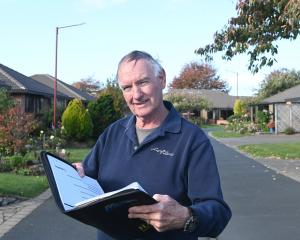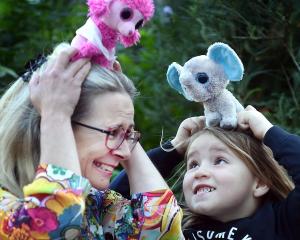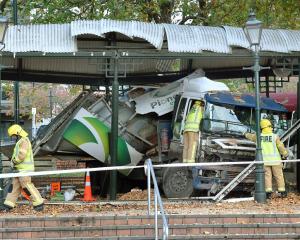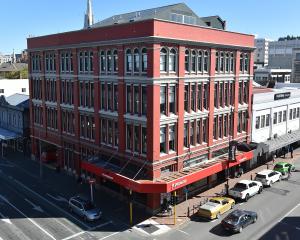These four lads from Liverpool came to Dunedin but didn't bring guitars.
They aren't rock'n'roll legends, but when they have finished their specialised work, putting together much of the museum's new state-of-the-art planetarium, Dunedin audiences will be seeing stars - and a few planets too.
In 1964, four other lads from Liverpool, Beatles John Lennon, Paul McCartney, George Harrison and Ringo Starr, packed in the crowds during their last performance, in Dunedin, of their New Zealand tour.
Late last week, supervisor Tommy Stafford, his son Joseph Kenny (25), Thomas Harrison (50), and Paul Bromley (26), all from Liverpool, arrived to put together key components of the ''digital immersive planetarium'', due to open to the public in December.
This is the first stage of a planned overall $3.25 million science engagement centre which is being created at the museum.
Having a sense of humour comes in handy for these four engineering specialists who spend up to 10 months a year criss-crossing the world, working as a team and putting together planetariums large and smaller for Spitz Inc, a leading planetarium manufacturer based in Pennsylvania, in the United States.
''We have a lot of laughs,'' he adds, saying a sense of humour encompassing the Beatles makes the work go better.
Having assembled the main dome, the four staff would, within a few days, be tackling the demanding task of fitting the aluminium panels in place, to cover the dome, where state-of-the-art sky imagery is projected.
Assembling such domes is complex, demanding work, requiring specialist knowledge and some specialist tools, including a slightly strange-looking curved ladder used for working on the curved areas on the outside of the dome.
Mr Stafford said it was hard work being away from home for long periods, and sometimes complex issues had to be faced in assembling planetariums when overseas.
Some places were like a ''building site'' when they arrived, and there could be delays because of those factors.
But the preliminary work by museum staff was complete when they arrived and the work was going well, he said.
Museum project manager Margot Deveraux said meticulous planning and hard work behind the scenes was required to make the planetarium a reality.












